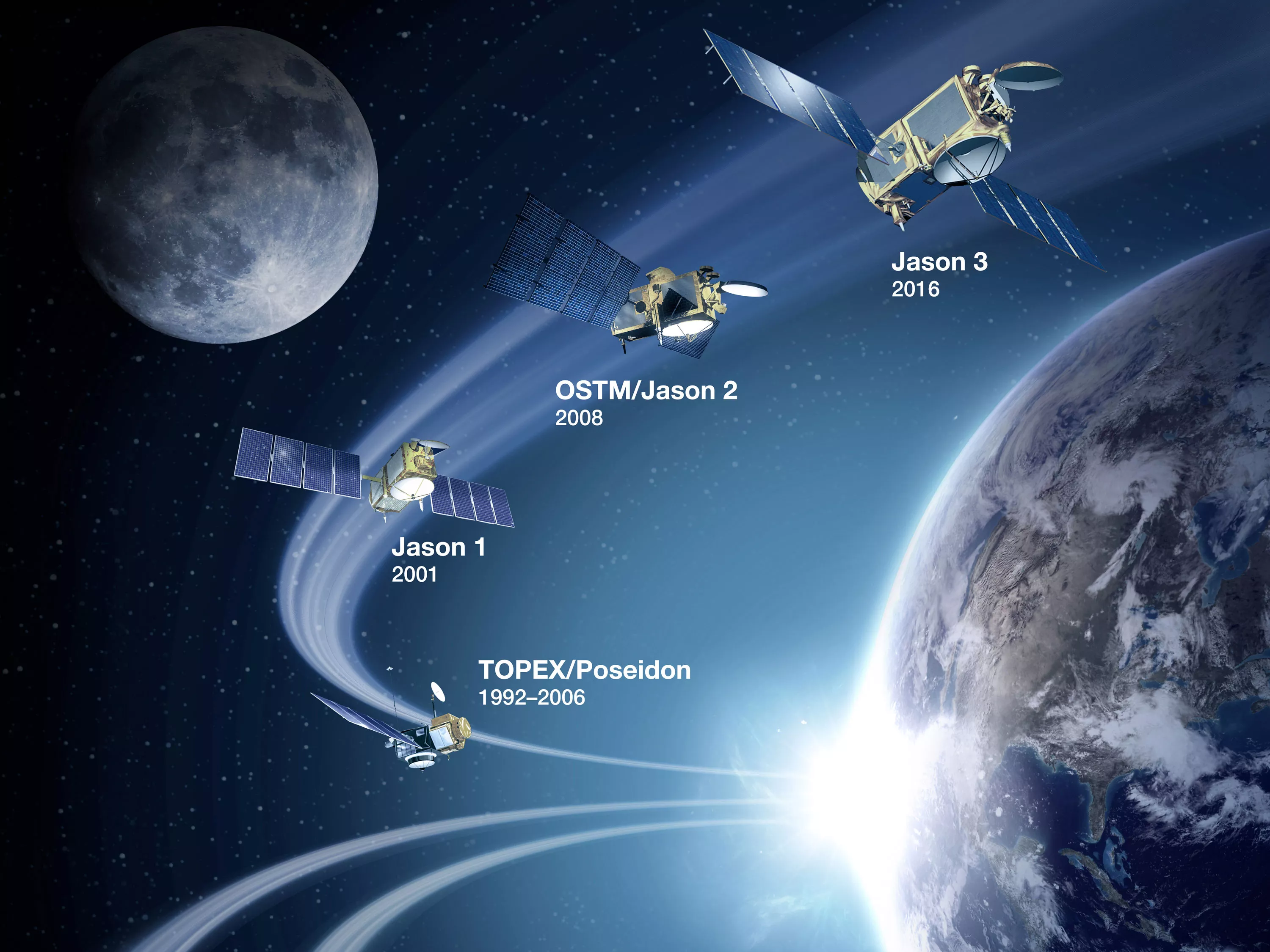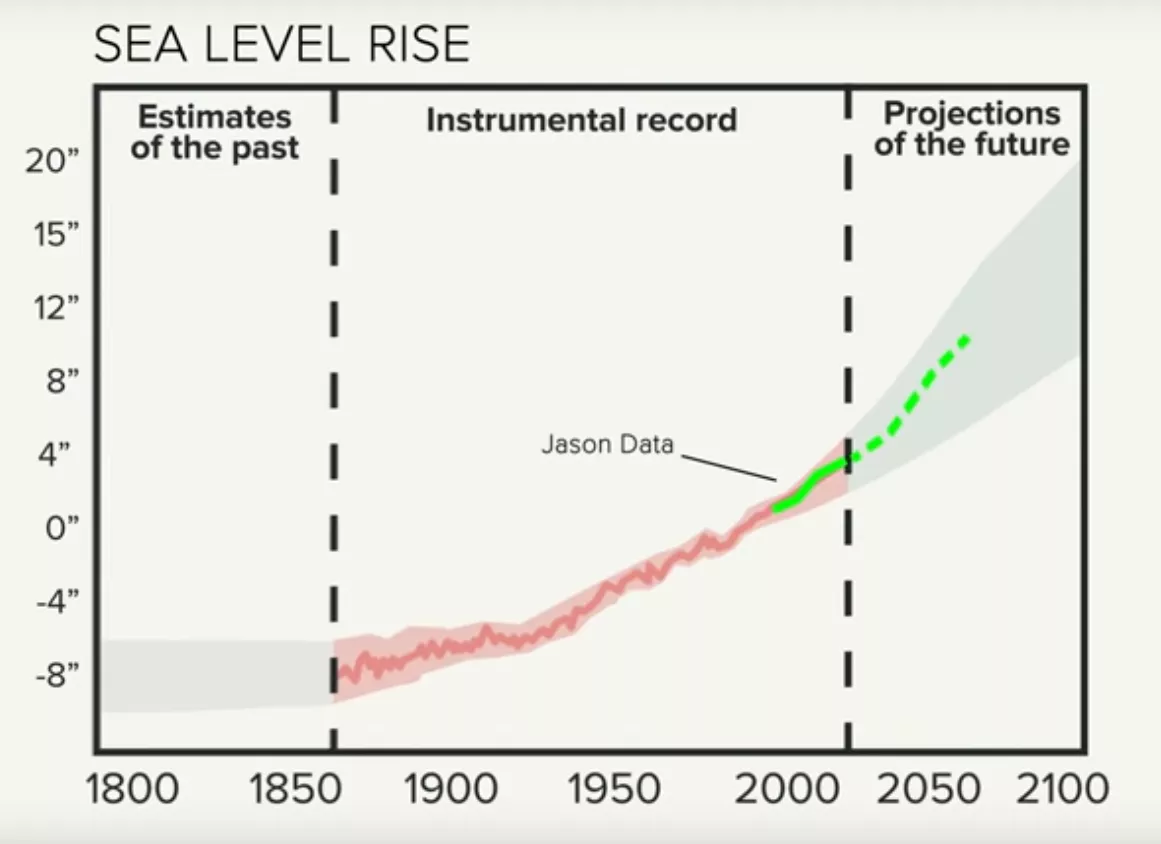Jason-2, the international oceanography satellite that has helped us map the ocean floor and measure global sea level rise, marks its tenth year in orbit today. The satellite has completed just over 47,000 trips around the Earth since it was launched into space on June 20, 2008.

Originally designed for a 3-to-5-year mission, the Jason-2 satellite has now spent a decade collecting valuable information about Earth’s oceans. A joint U.S.-European program, formally known as the Ocean Surface Topography Mission (OSTM), Jason-2 has allowed scientists to observe ocean currents, study global climate phenomena like El Niño and La Niña, and monitor the long-term rise in global sea level.
“After ten years of excellent service, we’re excited that Jason-2 is continuing to help forecast hurricane intensity and monitor winds and waves, while taking on a new mission of mapping unexplored part of the ocean,†said Eric Leuliette, NOAA’s Jason Program and Project Scientist.
The success of the Jason-2 mission helped pave the way for its follow-on mission, Jason-3, which launched in January 2016. Since then, the two satellites have flown in tandem, 830 miles above Earth’s surface, accurately measuring the height of the sea surface to within less than a centimeter.
Measuring sea level rise from space
Both Jason-2 and Jason-3 are equipped with instruments known as radar altimeters, which are used to track global sea levels. By measuring the time it takes for a radar pulse to make a round-trip from the satellite to the sea surface and back, scientists can calculate the height of the ocean surface across the globe. The radar also measures ocean winds and wave heights. Each satellite orbits the Earth in a repeat track designed to make observations over the same ocean point once every ten days.
Measuring changes in regional and global sea level is a critical component to understanding the impacts of climate change.
“We need the Jason satellites to be able to monitor where and when sea level is changing,†explains Leuliette. Data from the Jason satellites can help us predict future trends in sea level rise.

NOAA satellite data show that the global average sea level is rising at a rate of just over an eighth of an inch (3.4 millimeters) per year, largely due to melting glaciers and ice sheets and the thermal expansion of seawater as it warms. In 2016, the global mean sea level was 3.2 inches (82 mm) higher than it was in 1993, the year satellites first began measuring sea level data.
A millimeter may sound small (it’s roughly the thickness of a penny), but over time these numbers start to add up. At the current rate of sea level rise—assuming no further acceleration from melting ice caps and continued warming of the oceans—the average global sea level 50 years from now will be more than half a foot higher than it is today.
NOAA began continuously monitoring Earth’s sea level with the TOPEX/Poseidon satellite in 1992. Jason-1 took over in 2001 until Jason-2 took over in 2008. Jason-3 was launched in 2016, and like its predecessors, the satellite measures the height of 95 percent of world’s ice-free ocean every 10 days.
What’s next for Jason-2?
Ten years after its launch, Jason-2 is still hard at work. In July 2017, Jason-2 began a new science mission when it was maneuvered into a slightly lower orbit. In this new long-repeat orbit, Jason-2 began measuring the height of the sea surface, wave heights, and ocean wind speeds along a series of very closely spaced ground tracks (just 5 miles apart). It will take just over a year for Jason-2 to complete one cycle of these new ground tracks, which provide a very accurate and high-resolution estimate of the mean sea surface.
Scientists are using these new sea surface measurements to improve maps of the shape and depth of the ocean floor. Only about 15 percent of the world’s ocean depths have been directly measured at a high resolution (100 meters or more), while 50 percent of the world’s coastal waters remain completely unsurveyed. Seabed mapping, or “bathymetry” will help scientists gain new insights into geological features at the bottom of the ocean. Next month Jason-2 will be moved again, mapping ground tracks that will double the coverage of the ocean floor.

The data collected during these mapping missions have several societal and strategic benefits. For example, real-time information about ocean currents is important for marine, fishing and naval operations. In addition, accurate measurements of ocean heat content can help weather forecasters better predict the intensity of hurricanes and tropical storms and improve global climate forecasts.
The Jason satellite program is a joint effort between NOAA, NASA, France’s Centre National d’Etudes Spatiales (CNES) and the European Organization for the Exploitation of Meteorological Satellites (EUMETSAT).
Learn more about the mission here.
